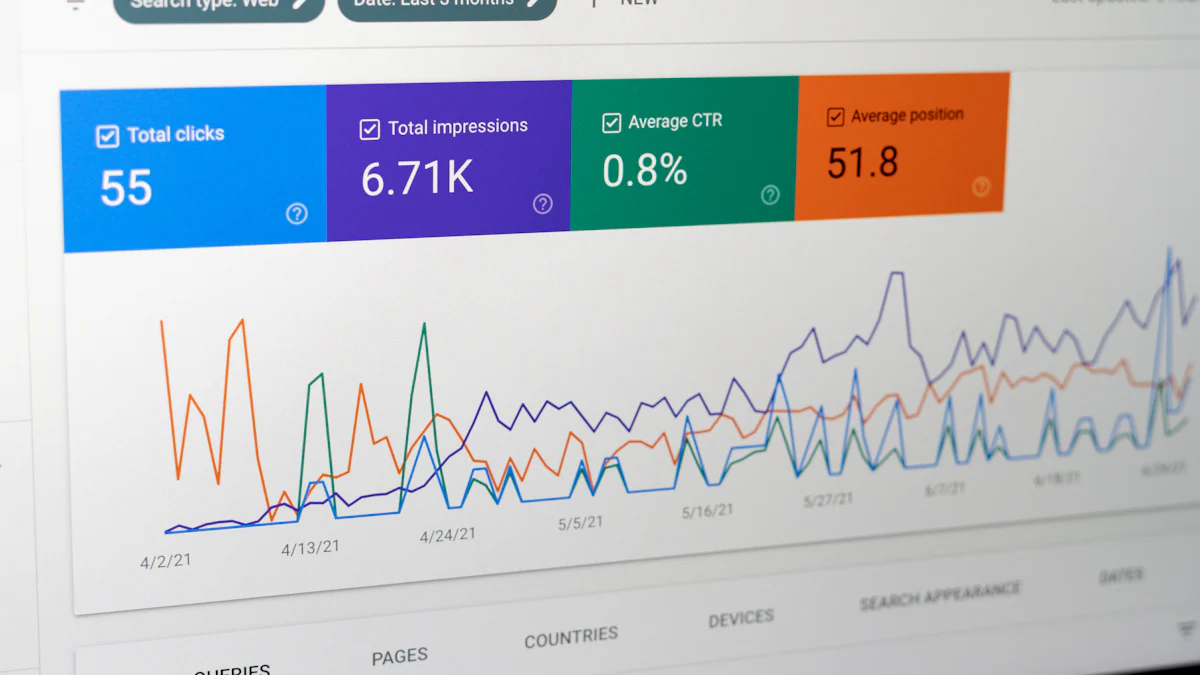Is Email Marketing Important for Your Inbound Strategy? Key Tips and Statistics

The Power of Email Marketing
In today's digital age, the power of email marketing cannot be overstated. Incorporating email marketing into your inbound strategy is not just important; it's crucial for achieving marketing success.
Email marketing, also known as electronic mail marketing, offers a direct and personalized way to connect with your audience. It allows you to reach potential customers and nurture existing ones through targeted communication.
Did you know? Email marketing is often considered one of the most effective channels for customer acquisition and retention. -Daniel Terry-GSD Local
Here are some key reasons why understanding the significance of email marketing is vital for your overall inbound strategy:
Email campaigns have the potential to reach a wide audience at a relatively low cost.
Personalized communication through email can significantly impact customer engagement and conversion rates.
As we delve deeper into this blog, we'll explore the benefits, tips, statistics, and ROI associated with email marketing. So, let's dive in and uncover how email advertising can fuel your overall inbound strategy!
Benefits of Email Marketing
Cost-Effective and High ROI
When it comes to cost-effectiveness, email marketing takes the lead. With minimal expenses compared to traditional advertising methods, email campaigns offer a budget-friendly approach to reaching a broad audience. The beauty of this lies in its high return on investment (ROI), making it an invaluable tool for businesses of all sizes.
As the saying goes, "work smarter, not harder." Email marketing epitomizes this concept by delivering targeted and personalized communication directly to specific segments of your audience. By tailoring your messages to resonate with different demographics or customer preferences, you can significantly increase the likelihood of conversions and foster deeper customer engagement.
In the words of marketing guru Seth Godin, "The cost of being wrong is less than the cost of doing nothing." This rings especially true in the realm of email advertising, where the potential for high ROI and personalized communication can propel your business forward.
Targeted and Personalized Communication
Email marketing thrives on its ability to deliver tailored content that speaks directly to individual recipients. By segmenting your email list based on various factors such as demographics, behavior, or past interactions, you can ensure that each message resonates with its intended audience. This level of personalization not only increases engagement but also cultivates a sense of connection between your brand and its recipients.
In essence, email marketing allows you to speak directly to each subscriber rather than broadcasting a generic message to a wide audience. As entrepreneur Gary Vaynerchuk puts it, "Marketers need to build digital relationships and reputation before closing any sale." Through targeted and personalized communication via email campaigns, you have the opportunity to do just that.
Personalization in Email Marketing
Segmentation and Customization
When it comes to email marketing, segmentation and customization play a pivotal role in delivering tailored content to your audience. By segmenting your email list based on demographics, behavior, or preferences, you can ensure that the content you deliver is relevant to each recipient. This personalized approach enhances engagement and fosters a stronger connection with your audience.
Segmentation allows you to categorize subscribers into specific groups based on various criteria such as location, purchase history, or interaction with previous campaigns. This targeted approach enables you to create customized content that resonates with each segment of your audience. For instance, if you have a promotion specific to a certain geographic region, segmenting your list allows you to send this offer exclusively to subscribers in that area.
Customizing email content further enhances relevance and engagement by tailoring the message to suit the unique characteristics of each recipient. Whether it's addressing subscribers by their first name or recommending products based on their past purchases, customization adds a personal touch that can significantly impact the effectiveness of your email campaigns.
In essence, segmentation and customization empower you to speak directly to different segments of your audience in a way that feels personalized and relevant to their individual needs and interests.
Automated Personalization
Automation tools have revolutionized the way marketers implement personalization in email campaigns. These tools enable you to create automated email sequences that are triggered by user actions or interactions. For example, when a subscriber makes a purchase, an automated follow-up email can be sent to express gratitude and provide additional product recommendations based on their purchase history.
Automated personalization ensures that timely and relevant content is delivered to subscribers without requiring manual intervention for each interaction. By leveraging automation, you can maintain consistent communication with your audience while delivering a personalized experience at scale.
The ability to personalize emails through segmentation and automation not only strengthens customer relationships but also increases the overall effectiveness of your email marketing efforts.
Fueling Your Inbound Strategy
When it comes to fueling your inbound strategy, email marketing serves as a powerful tool for building and nurturing relationships with your audience. Let's explore how incorporating email into your inbound approach can contribute to long-term success.
Building Relationships and Trust
Email marketing fosters ongoing communication, allowing you to stay connected with your audience on a consistent basis. This continuous engagement is instrumental in building trust and establishing long-term relationships with subscribers.
As entrepreneur Derek Sivers once said, "The key to breaking through is being real, not perfect." Email provides a platform for genuine communication that resonates with recipients, ultimately contributing to the authenticity of your brand's inbound tactics.
Lead Nurturing and Conversion
Within the realm of inbound marketing, email campaigns play a vital role in nurturing leads and guiding them through the conversion funnel. By delivering targeted content at various stages of the customer journey, email marketing enhances lead conversion and facilitates customer acquisition.
In the words of digital marketing expert Neil Patel, "Email has an ability many channels don't: creating valuable, personal touches—at scale." This personalized approach to lead nurturing through email can significantly impact the effectiveness of your overall inbound marketing plan.
Effective Email Marketing Tips
Compelling Subject Lines
Crafting compelling subject lines is like creating the opening act of a captivating story. It's your chance to grab your audience's attention and entice them to open your email. A well-crafted subject line should be concise, intriguing, and directly relevant to the content of the email. Think of it as the gateway to your message; it needs to be compelling enough to prompt the recipient to take that crucial step of clicking to open the email.
In today's fast-paced digital world, people are inundated with countless emails vying for their attention. Your subject line needs to stand out amidst this sea of messages. It should pique curiosity, evoke emotion, or offer a clear benefit that encourages the recipient to engage with your content.
As marketing expert Ann Handley once said, "Make the customer the hero of your story." Your subject line should focus on how it benefits the recipient rather than just promoting your message. By putting yourself in your audience's shoes and considering what would compel them to open an email, you can craft subject lines that truly resonate.
Engaging Visual Content
Visual content has become increasingly integral in capturing and retaining audience attention. When it comes to email marketing, incorporating visually appealing elements such as images and videos can significantly enhance engagement and convey information more effectively than plain text alone.
Humans are naturally drawn to visuals, and they have the power to evoke emotions and tell stories in ways that words sometimes cannot. Including eye-catching images or informative videos in your emails can make them more visually stimulating and captivating for recipients.
Moreover, visual content provides an opportunity for you to showcase products or services in a more engaging manner. Whether it's a sneak peek at a new product launch or a tutorial video demonstrating how to use your offerings, visual elements can bring your emails to life and leave a lasting impression on your audience.
As renowned marketer Seth Godin once said, "Marketing is no longer about the stuff that you make but about the stories you tell." Visual content allows you to tell compelling stories within the confines of an email, making it an invaluable tool for enhancing engagement with your audience.
Understanding Email Marketing Statistics
Open and Click-Through Rates
When delving into the realm of email marketing, understanding open and click-through rates provides invaluable insights into the effectiveness of your email campaigns. Open rates measure the percentage of recipients who opened your email, while click-through rates indicate the proportion of individuals who clicked on a link or call-to-action within your email.
By analyzing these statistics, you gain a deeper understanding of how well your emails are resonating with your audience. A high open rate signifies that your subject lines and sender information are compelling, prompting recipients to open and engage with your content. On the other hand, a high click-through rate indicates that the content within your emails is engaging and relevant enough to prompt action from your subscribers.
These metrics serve as indicators of user engagement and can provide valuable feedback for optimizing future email content and campaign performance. For instance, if you notice a decline in open rates, it may be an indication that your subject lines need refinement or that your emails are not reaching the right audience segments. Similarly, low click-through rates may signal a need for more compelling content or clearer calls-to-action within your emails.
Understanding open and click-through rates empowers you to make data-driven decisions to enhance the effectiveness of your email marketing efforts. It allows you to refine your strategies based on recipient behavior and engagement patterns, ultimately leading to more impactful communication with your audience.
Conversion and Engagement Metrics
In addition to open and click-through rates, various other metrics related to conversions and engagement play a crucial role in measuring the impact of email marketing on business goals. Conversion metrics encompass actions taken by recipients after engaging with an email, such as making a purchase, signing up for a webinar, or downloading gated content.
Engagement metrics go beyond mere opens and clicks; they delve into how recipients interact with the content once they've engaged with it. These metrics may include time spent reading an email, interaction with embedded media or links, social shares initiated from an email, or subsequent visits to the website following email engagement.
Tracking these statistics provides valuable insights into how effectively your email campaigns are driving desired actions from recipients. By monitoring conversion and engagement metrics over time, you can identify trends in recipient behavior and tailor future campaigns to better align with their preferences.
Ultimately, understanding these comprehensive statistics guides strategic decisions for improving overall email marketing effectiveness. It enables you to fine-tune your approach by delivering content that resonates deeply with recipients while driving meaningful actions that contribute to overarching business objectives.
Calculating Email Marketing ROI
When it comes to evaluating the effectiveness of your email marketing efforts, measuring the return on investment (ROI) is essential. Understanding the profitability and performance of your email campaigns provides valuable insights into their impact on your overall business goals.
Measuring Investment and Returns
Calculating the ROI of email marketing involves a comprehensive assessment of both the costs incurred and the returns generated from your campaigns. The costs may include expenses related to email automation tools, design and content creation, as well as any fees associated with list management or campaign analytics. On the other hand, returns encompass the revenue attributed to email-driven conversions, such as purchases made directly from email links or sign-ups for webinars or events.
By analyzing these investment costs against the returns generated, you gain a clear understanding of how profitable and effective your email marketing initiatives are. This insight enables you to make informed decisions about resource allocation and strategy refinement to optimize your ROI.
Attribution and Performance Tracking
Effective attribution models and performance tracking tools are indispensable for accurately measuring the ROI of your email marketing endeavors. Attribution models allow you to attribute conversions or desired actions back to specific email campaigns or touchpoints within those campaigns. This helps in identifying which emails are driving valuable outcomes for your business.
Furthermore, performance tracking tools provide detailed insights into recipient behavior and engagement patterns. These tools enable you to monitor metrics such as open rates, click-through rates, conversion rates, and revenue generated from each campaign. By delving into this data, you can pinpoint high-performing campaigns as well as areas for improvement.
Analyzing attribution data not only sheds light on the contribution of email marketing to overall business outcomes but also informs strategic decisions for future campaign optimization. It empowers you to refine targeting strategies, content delivery methods, and engagement tactics based on tangible evidence of what drives positive results.
Integrating Email Marketing
Integrating email marketing into your overall inbound strategy is like adding a powerful engine to your marketing vehicle. It's not just an option; it's a necessity for driving engagement, nurturing leads, and ultimately achieving marketing success.
By seamlessly incorporating email advertising into your broader inbound approach, you create an interconnected ecosystem where each component works harmoniously to attract, engage, and retain customers. Email campaigns serve as the personalized touchpoint that keeps your audience informed, intrigued, and connected to your brand.
When integrated effectively, electronic mail marketing becomes the thread that weaves through every stage of the customer journey. From initial awareness to post-purchase engagement, email plays a pivotal role in nurturing relationships and guiding prospects towards conversion.
In essence, integrating email marketing into your inbound strategy is akin to infusing personalized communication and targeted messaging into the DNA of your entire marketing framework. It's not just about sending emails; it's about creating meaningful interactions that drive tangible results for your business.
Passion for Digital Transformation
At the heart of GSD Local is a burning passion for transforming businesses digitally. From enhancing your online reputation to mastering social media engagement, we are driven by the desire to see your business flourish online. Your growth is our mission. We are fiercely committed to your success, approaching every project with a veteran's discipline and dedication. Our focus is not just on delivering services, but on providing solutions that result in tangible business growth for you.


Fill out the form and we will answer any questions that you might have.
At GSD Local we are here to help you grow your business with Google reviews, powerful backlinks, optimized articles and so much more, while you run your business, all at a surprisingly low cost - high value. Let me look at your business and I will honestly let you know if I can grow your business.
Contact Us
Fill out the form below and I will contact you within 24 hours or less.
See Also
Mastering Email Marketing for Small Business in 2024
Revealing the Effect: Does Content Marketing Boost SEO?
The Definitive Way to Obtain Quality Backlinks for Your Website
Top 10 Email Security Tips for Business in 2024
Effective Methods for Creating Quality Backlinks for Your New Website

